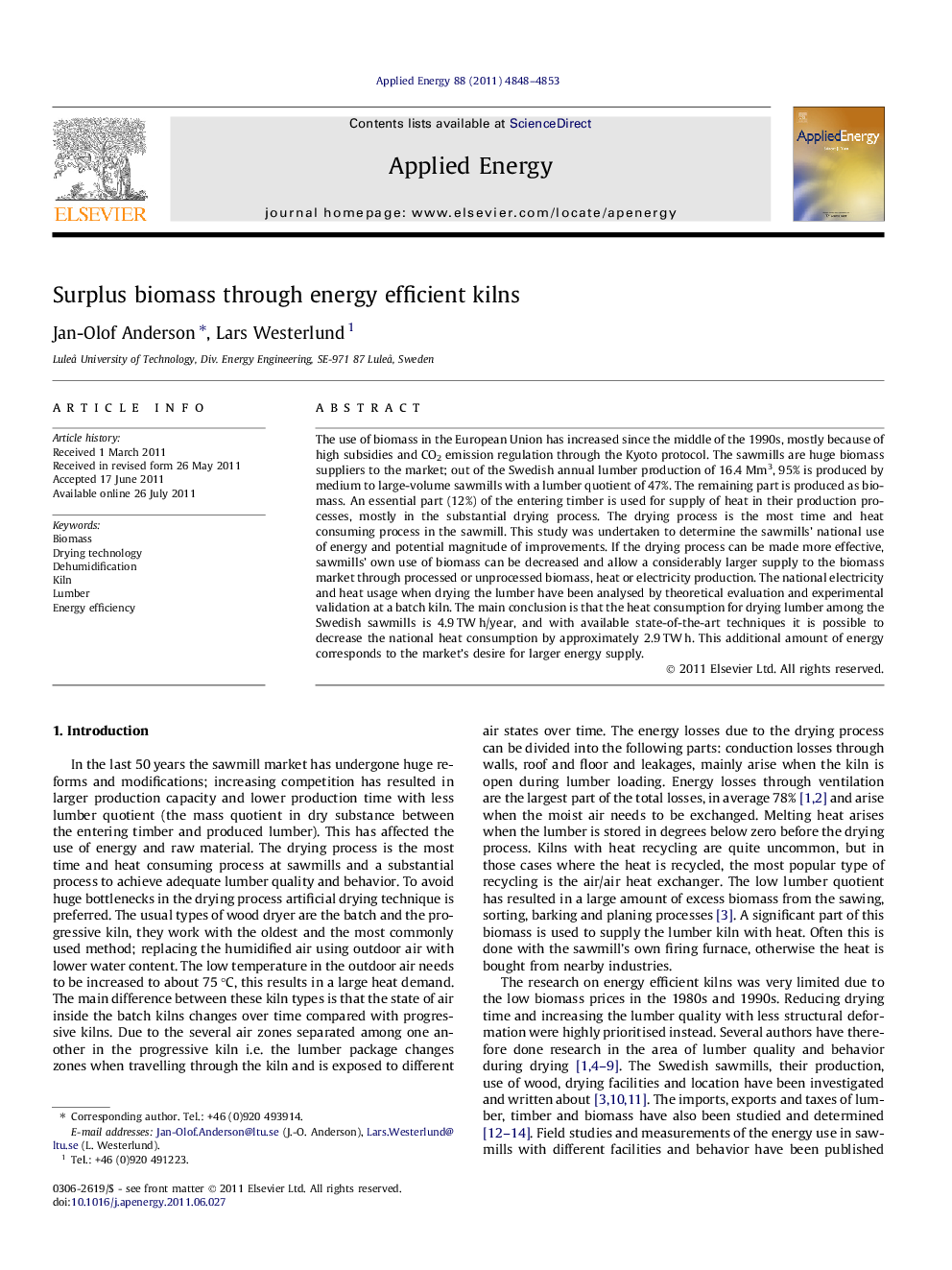| Article ID | Journal | Published Year | Pages | File Type |
|---|---|---|---|---|
| 244007 | Applied Energy | 2011 | 6 Pages |
The use of biomass in the European Union has increased since the middle of the 1990s, mostly because of high subsidies and CO2 emission regulation through the Kyoto protocol. The sawmills are huge biomass suppliers to the market; out of the Swedish annual lumber production of 16.4 Mm3, 95% is produced by medium to large-volume sawmills with a lumber quotient of 47%. The remaining part is produced as biomass. An essential part (12%) of the entering timber is used for supply of heat in their production processes, mostly in the substantial drying process. The drying process is the most time and heat consuming process in the sawmill. This study was undertaken to determine the sawmills’ national use of energy and potential magnitude of improvements. If the drying process can be made more effective, sawmills’ own use of biomass can be decreased and allow a considerably larger supply to the biomass market through processed or unprocessed biomass, heat or electricity production. The national electricity and heat usage when drying the lumber have been analysed by theoretical evaluation and experimental validation at a batch kiln. The main conclusion is that the heat consumption for drying lumber among the Swedish sawmills is 4.9 TW h/year, and with available state-of-the-art techniques it is possible to decrease the national heat consumption by approximately 2.9 TW h. This additional amount of energy corresponds to the market’s desire for larger energy supply.
► The magnitude of the national heat demand for drying lumber in kilns is established. ► Each part of the total heat consumption is divided and shown between the main drying conditions. ► The potential to increase the energy efficiency in kilns with available techniques is presented. ► The market demand for the biomass, available with increase kiln energy efficiency, is reviled.
